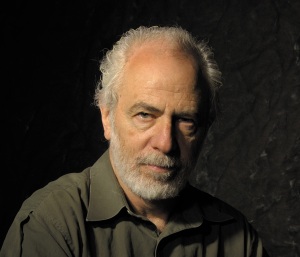Don’t Let My Baby Do Rodeo, by Boris Fishman. Harper. 336 pages. Hardcover $26.99.
This novel ties together an exploration of the immigrant experience, the roots of personal identity, and the possible shapes of families. It is an episodic quest narrative that attempts to answer the question: “What makes eight year old Max Rubin so strange?” This is the question that has been growing larger and larger in the mind of Maya Shulman Rubin, the woman who with her husband Alex adopted the infant Max. The quest is a journey to the Montana home of Max’s birth parents, where Maya feels the answer must lie. 
For Alex, Max doesn’t seem quite so strange; his reluctant agreement to take the journey grows out of his need to sooth a range of stresses in the marriage. That is, he wishes to satisfy his wife – somehow.
Alex and Maya live in suburban New Jersey. The son of Russian immigrants, Alex met Maya when she came to the U. S. from the Ukraine as an exchange student. They are both children of Jewish parents whose sense of Jewish identity, while strong, does not include active involvement in Jewish ritual or community life. Alex, who had struggled for a defining career, has ended up working for his father’s import business. Maya’s dreams of becoming a chef gave way to a job as a medical technician. Seemingly infertile (we learn late in the novel that their childlessness had to do with Alex, not Maya), she ironically meets breasts daily while taking mammography images.
Maya’s insistent need to be a mother leads them, in their mid-thirties, to adopt. Their steps in taking this action seem flawed – or at least naïve. The Montana couple, not yet out of their teens, needs to meet the adopters, and they deliver the child to the Rubins rather than use professional intermediaries. They give up all rights. It is the birth mother, Laurel, who utters the title phrase: “Don’t let my baby do rodeo.” She has seen how rodeo has torn up her husband.
The point of attack is eight years later. Maya is approaching her forty-third birthday. The Rubins’ situation as a family is not what they hoped it would be. Moreover, there is some kind of wildness in Max. He enjoys sleeping in a tent behind the house, collecting and perhaps consuming grass samples, and communing with animals. He doesn’t fit in at school. He doesn’t make friends. One day, when he is supposed to board the school bus for his return home, he gets on a public bus and disappears.

Fishman
After he is discovered and brought home, and after professional help toward understanding Max’s behavior proves ineffective, the family begins the journey to Montana.
The 2,000 mile journey is a new beginning (perhaps actually the first beginning) of their American lives, which until now have been highly restricted. This is especially true for Maya, who came to the U.S. when she was many years older than Alex was upon his arrival and thus is not as fully acclimated. Still, they have been living inside of the older Rubins’ immigrant family patterns and still seem like they have not yet grown up.
The journey is an informal education in American openness, as well as other qualities symbolized by the immensity and variety of the landscapes they move through. Once again, it’s like they have moved to a foreign country – but this time they are much faster learners. They are tested over and over again, with mixed success, but always with personal growth. Again, Maya is more dynamic than Alex in these travel chapters, just as she is throughout the novel. Thus her eyes are opened more widely and she learns much more about herself.
An affair assists her education, as does a comment made when she finally engages Max’s birth mother again. (This scene has a dreamlike quality and might be taken as a dream or reverie.) Laurel suggests that Max’s wildness is not some eruption of genetic traits but rather the restless vibes he has picked up from Maya – the true, if repressed, wild one. Though they come from different color palettes, Maya and Max have become profoundly related.
Though the Rubins, returning to New Jersey, are not fully transformed, they seem far more capable of transformation. They seem capable of self-creation – of forging (such a double-edged word) identities more vital than the immigrant cloaks they have been wearing. As middle age approaches, they are finally growing up.
I came to love this book more and more as I stayed in it. The expository matter that prefaces the trip to Montana can drag a bit, though it is necessary. Fishman’s wit is not so fully on display here as in A Replacement Life, but you’ve got to like a guy who knows that the perfect car model name for this quest is the Ford Escape.
This review appears in the July-August 2016 issue of Federation Star (Jewish Federation of Collier County) and the July 2016 issues of L’Chayim (Jewish Federation of Lee and Charlotte Counties) and The Jewish News (Jewish Federation of Sarasota-Manatee).












